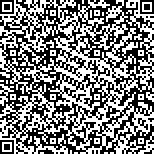| This article has been:Browse 2368Times Download 4041Times |

scan it! |
|
|
| DOI:10.13522/j.cnki.ggps.2021262 |
|
| Measuring Soil Water Content Using the Cosmic-ray Neutron Probe: A Review |
|
CHEN Yitong, LI Min, SI Bingcheng, et al.
|
|
Key Laboratory of Agricultural Soil and Water Engineering in Arid and Semiarid Areas, Ministry of Education, Northwest A&F University, Yangling 712100, China; 2. Department of Soil Science, University of Saskatchewan, Saskatoon S7N5A8, Canada;
3. School of Resource and Environmental Engineering, University of Ludong, Yantai 264000, China
|
| Abstract: |
| Soil moisture is an important index in agricultural production and irrigation management, but difficult to measure in the field due to its spatiotemporal heterogeneity. The cosmic-ray neutron probe method developed over the past decade has emerged as new technology to non-invasively monitor soil water change at large scales and at fine time resolutions. Previous studies have shown that it is able to measure average soil water content at a given depth over an aerial area spanning several hundred meters radially. As a method to bridge the gap between point measurement and large-scale soil water estimate using remote sensing, there have been an increase in its applications in various areas including irrigation management, hydrological data assimilation and hydrological modeling. The purpose of this paper is to review the latest research progress and achievements in the use of cosmic-ray neutron method. It covers principle of the method, its monitoring range, factors influencing its accuracy and applicability, as well as possible problems and solutions. We also outline its potential application in agriculture, hydrology and other fields. |
| Key words: soil water content; cosmic-ray neutron probe method; landscape scale; in-situ monitoring; continuous monitoring |
|
|